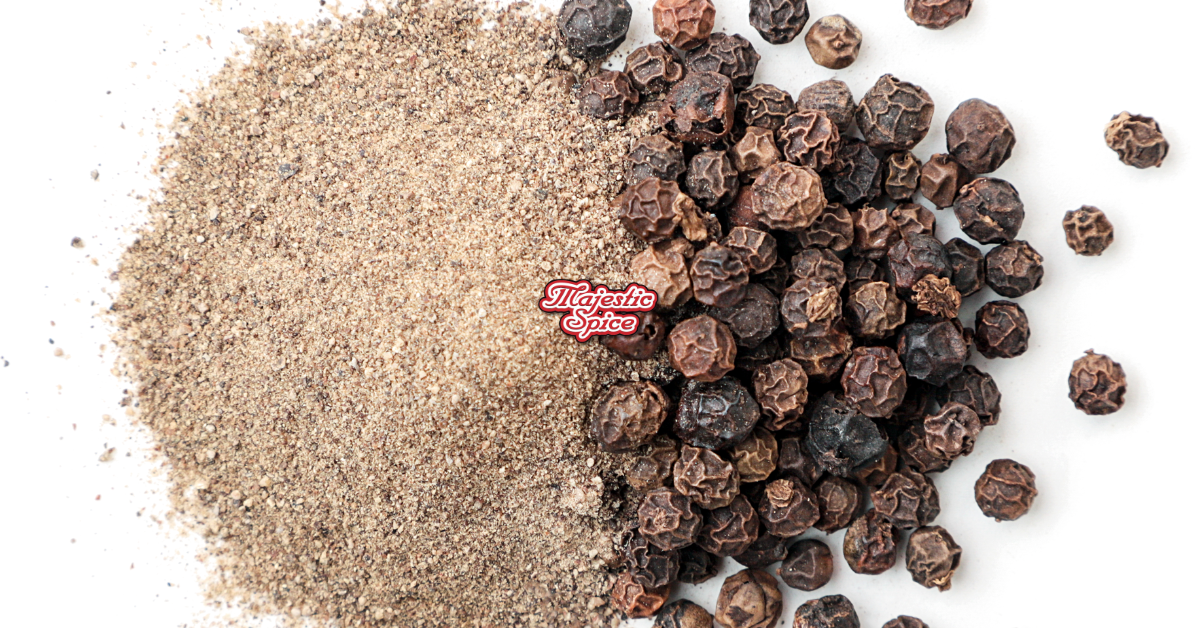
Black pepper is one of the most traded spices in the world, and right now the market is tighter than it has been in years. If you’re sourcing in bulk for the U.S., the situation this month deserves attention.
Global Supply Pressures
- Production down by 20% in 2025 worldwide due to erratic weather in Vietnam, India, and Indonesia.
- Farmers in Vietnam are shifting to other crops; India is battling monsoon-related fruit rot; Indonesia’s arrivals are slow.
- Only a few countries control most of the supply, so even small disruptions drive price spikes.
Current Prices (August 19, 2025)
- Vietnam (500/550 g/l FOB): $6,240–6,370/MT
- Brazil (ASTA 570 FOB): $6,050–6,250/MT (some mid-July dips to $5,800/MT)
- Indonesia (Lampung black): $7,300–7,800/MT
- India (Cochin domestic): INR 677–697/kg (≈ $8.1–8.4/kg)
Prices in India and Indonesia are firming, while Brazil is softening slightly—but U.S. tariffs change the picture.
Tariffs Shaping the U.S. Market
- Brazil: As of August 1, a 50% U.S. tariff applies. Even with lower FOB prices, landed costs for U.S. buyers are climbing.
- Vietnam: A threatened 46% tariff was paused in July, but reciprocal trade measures are still in discussion. Some importers face effective duties near 20%.
- India & Indonesia: No new tariffs, making them safer options for U.S. buyers—but at higher base prices.
Bottom line: U.S. buyers will pay more no matter the origin. The question is where the pain is lowest.
Price Outlook (Q4 2025)
- Vietnam: Likely to hold in the $6,300–6,800/MT range.
- Brazil: $5,900–6,400/MT FOB, but tariffs keep landed U.S. costs high.
- Indonesia: Expected to stay firm at $7,300–7,800/MT.
- India: Stable at $8.1–8.4/kg, but weather remains a risk.
Risk factors: another monsoon shock in India, strong holiday demand in Q4, or further tariff escalation. Any of these could add 10–20% to current levels.
Buying Strategy in August 2025
- Don’t wait too long. Holding off in hopes of cheaper prices is risky—global production is down and U.S. tariffs are pushing costs up.
- Diversify origins. Balance contracts across Vietnam, Indonesia, and India. Avoid relying too heavily on Brazil unless you have non-U.S. distribution.
- Secure partial cover now. Lock in 50–70% of your Q4 needs. Leave some room open, but don’t gamble your entire supply chain on a soft patch.
- Audit landed costs. Make sure every supplier quote includes HTS code, origin, and duty assumptions—small print now saves large losses later.
Final Takeaway
The black pepper market in August 2025 is defined by scarcity and tariffs. Global output has dropped by 20%, U.S. buyers face a 50% duty on Brazil, and Vietnam shipments carry risk of additional tariffs. Prices are steady to rising across most origins, with India and Indonesia leading the firm trend.
If you’re a U.S. bulk buyer, the safest move is to lock in a portion of your supply now before Q4 demand puts further pressure on the market. Waiting could cost you 10–20% more per metric ton within weeks.
